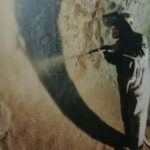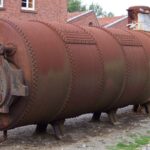Saving Time and Money with Efficient Refractory Installation Techniques

Efficient refractory installation is crucial for industries such as steel, cement, glass, and petrochemicals, where high temperatures and harsh conditions require reliable and durable refractory linings.
Here are some techniques to save time and money during refractory installations:
1. Pre-Installation Planning
- Thoroughly plan the installation process, considering factors such as material selection, curing time, and environmental conditions
- Ensure all necessary equipment, tools, and materials are on-site before starting the installation
2. Proper Material Selection
- Choose refractory materials that are suitable for the specific application and conditions
- Consider pre-shaped refractory bricks or precast shapes that can be easily installed, reducing the need for on-site cutting and shaping
3. Precast Modules and Shapes
- Utilize precast refractory shapes and modules that are manufactured off-site. This can significantly reduce installation time and labor costs
- These precast shapes are designed to fit together seamlessly, minimizing the need for skilled labor during installation
4. Dry Vibratable or Gunning Techniques
- Dry vibratable and gunning techniques can be faster than traditional wet installation methods. These methods involve spraying or vibrating dry refractory material into place, reducing curing times
- Gunite, shotcrete, and gunning techniques are often used for repairs and quick installations.
5. Monolithic Refractories
- Consider using monolithic refractories, which are unshaped refractory materials that can be installed quickly and easily. These materials include castables, plastics, and ramming mixes
- Monolithic refractories are often more versatile and can conform to complex shapes, reducing the need for custom-shaped bricks
6. Quality Control Measures
- Implement stringent quality control measures to ensure the refractory material’s consistency and proper installation
- Regularly check the mixing ratios, curing times, and installation procedures to avoid rework and wastage
7. Optimized Curing Procedures
- Follow manufacturer recommendations for curing times and procedures. Optimizing curing times can save time and energy costs
- Consider using rapid-curing refractory materials when appropriate
8. Skilled Workforce
- Ensure that the installation team is well-trained and experienced in refractory installation techniques
- Skilled workers can complete the installation more efficiently, reducing the likelihood of errors and rework
9. Use of Technology
- Explore modern technologies, such as robotics and automated systems, for certain aspects of the installation process
- Advanced tools and equipment can improve precision and speed up installation.
10. Regular Maintenance and Inspection
- Implement a proactive maintenance and inspection program to identify and address issues early, preventing the need for extensive repairs or replacements.
By combining these techniques, industries can streamline refractory installations, minimize downtime, and ultimately save both time and money. However, it’s important to note that the specific approach may vary depending on the type of refractory material, the application, and the industry requirements. Always consult with refractory experts and adhere to manufacturer guidelines for optimal results.




